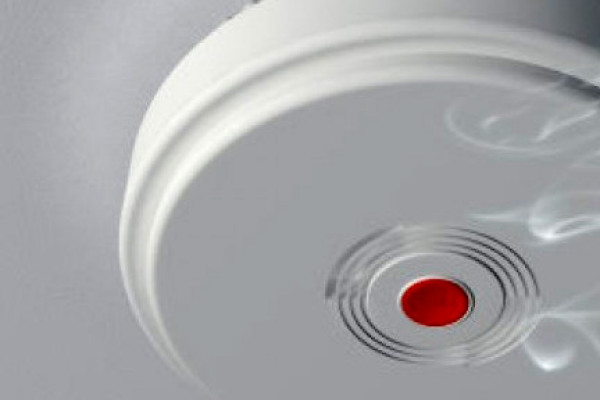CHARLESTON FIRE DEPARTMENT
The Importance of Smoke Alarms for Your Family

By: Thomas Robinson on Jul-31-17
Few of us realize how easily — and how quickly — fire can harm our loved ones. Fortunately, there is a simple, affordable way to help prevent this from happening: the smoke alarm.
By providing an early warning in the event of fire, smoke alarms may allow you and your family sufficient time to reach safety. Many people have neglected to install smoke alarms despite their life-saving potential and low cost. Even those who do have smoke alarms often take them for granted — forgetting that they need some attention to continue working properly. UL offers the following tips for purchasing and maintaining smoke alarms.
Step 1: Buy smoke alarms – and cut your family’s risk in half.
Experts report that consumers may cut their risk of dying in a home fire in half simply by having a smoke alarm installed. Smoke alarms are available at nearly all hardware, department and discount stores, often for under $20. So don’t delay – get out there and buy one. The peace of mind you’ll have from knowing that your family is safe and secure is worth the investment.
Step 2: Look for the UL Mark
When you purchase a smoke alarm, look for the UL Mark on the product as well as on the packaging. The UL Mark tells you that a representative sample of the smoke alarm has been evaluated by UL scientists and engineers to nationally recognized safety requirements. It also means that UL conducts follow-up evaluations to countercheck that samples of the smoke alarm continue to meet these safety requirements.
Step 3: Don’t just buy one! There’s safety in numbers
Install at least one smoke alarm on each floor of the house or residence and outside all sleeping areas. Some fire safety advocates recommend installing smoke alarms inside each sleeping area if sleeping with the door closed.
Step 4: Keep your alarms working properly
Working smoke alarms are needed in every home and residence. Test and maintain your smoke alarms at least once a month, or follow the manufacturer’s instructions. Smoke alarms most often fail because of missing, dead or disconnected batteries. Replace batteries at least once a year. Testing is generally as simple as pushing a button and listening to hear the beep.
Step 5: Practice a fire escape plan
In addition to installing smoke alarms in your home, UL also recommends that you develop a fire escape plan and practice it at least twice a year with all members of your household. In the event of a fire, every family member should know at least two ways out of each room. Stay as close to the floor as possible during your escape. Hot air and smoke rise, so the air nearest the floor may be safer to breathe. If you encounter a closed door during your escape, feel the door before opening it. If it’s hot to the touch, use another exit. The heat could indicate fire on the other side of the door. Teach your children how to escape in case of a fire — not to hide under a bed or in a closet.
Some individuals, particularly children, older people and those with special needs, may not wake up to the sound of a smoke alarm. You should be aware of this when developing your home fire escape plan.
Designate a well-lit place, a safe distance away from your home, where everyone will meet in the event of a fire. This will help firefighters determine if anyone else is still inside the home. And remember, never return to a burning building for any reason.
Review of smoke alarm installation, safety and maintenance
- Read and follow the manufacturer’s installation and maintenance instructions (including regular testing).
- Install fresh batteries in your smoke alarms at least once a year.
- Don’t allow anyone to disconnect or “borrow” the batteries from your smoke alarms. A smoke alarm can’t work unless it’s connected to a power source.
If the warning alarm sounds, don’t panic. Stay close to the floor and get out of the building. Before opening any doors, check the temperature. If the door feels hot to the touch, don’t open it. Use an alternate exit.
All News